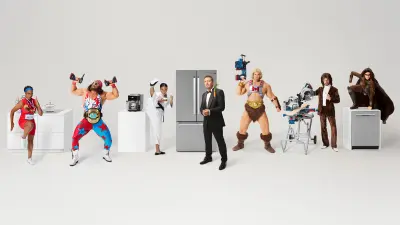“We’ll still be able to feel the thrill of freedom”
What does the future of mobility hold in store? Bosch project manager Michael Fausten gives us a look ahead
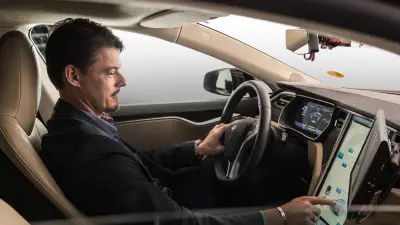
A Tesla Model S which Bosch has converted into a test vehicle is one of the few self-driving cars with permission to drive on German freeways. Project manager Michael Fausten has already taken it for a spin – and he believes it is the driving culture of tomorrow.
Mr. Fausten, how long have people been dreaming of automated driving?
Almost as long as we’ve had cars. Back in the 1960s, the science-fiction writer and futurologist Arthur C. Clarke produced a concrete vision of automated driving. In his book “Profiles of the Future,” he describes cars that choose their own route, know which route is fastest, and identify where there is traffic congestion. Automated driving also appears in the scenarios for the future that General Motors developed in the 1960s. In the 1980s, Mercedes converted a bus, packing it with cabinets full of electronics so that it could drive itself. Back then, people said it would take another 30 years until fully automated driving was reality.
What drives the development of automated vehicles?
Surround sensors have become affordable thanks to technological progress and the fact that there is now far more demand for them. When we launched ACC adaptive cruise control in 2000, not even one percent of car buyers were prepared to pay a premium for it, partly because there was virtually no empirical data. These days, we still don’t have the empirical data for automated driving. But more than half of buyers would be willing to consider it — provided the system can be turned off. In fact, a U.S. study suggests 20 percent would be willing to pay between three and four thousand dollars more for such a system.
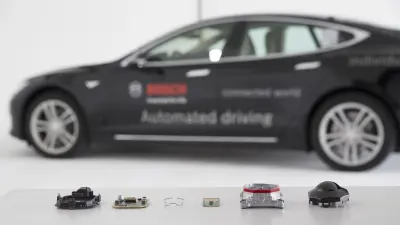
15 percent
of all new vehicles worldwide are supposed to have an electrical powertrain by 2025.
What is the biggest social benefit of this new driving culture?
Automated driving is a perfect fit for our “Invented for life” ethos. With this new kind of driving, traffic jams will be a thing of the past: after all, automated vehicles won’t slow down to gawk at the scene of an accident. Nor will they keep changing lanes in an effort to get to their destination faster. Automated driving will save us time and energy that we can then put to productive use. It will also save fuel — as much as 40 percent if all vehicles are automated and able to travel in the slipstream of the vehicle in front. Automated driving is a way to ensure elderly people can continue to play an active role in society. In 2050, 25 percent of the population of Europe will be 65 or older, and the share of over-65s in Germany will have risen to more than 30 percent. And there’s another hugely important aspect: we will increase safety. Today, 90 percent of traffic accidents are the result of human error.
What types of vehicles are you looking to automate first?
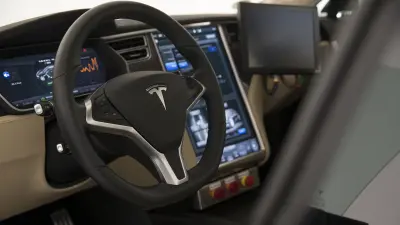
We’re going to start with premium vehicles, for which we will offer both automated freeway driving and automated parking. Work has already started on installing the necessary technology in an initial batch of parking garages. The second target group is trucks, which in the future will be able to maneuver themselves around logistics depots. We’re also considering pods, the small driverless vehicles that Google is currently testing on roads in California. The idea is that one day, people will be able to hail these pods just like they do a taxi.
“We want to develop automated driving for all types of powertrain.”
In the future the number of electric vehicles will grow. How are you dealing with that?
It’s primarily the engineers working on vehicle architecture who face challenges, since cars powered by an internal-combustion engine behave differently than electric vehicles. That’s why we want to develop a concept for automated driving that is independent of the type of powertrain installed. The electrical powertrain is coming — there’s no doubt about that. But the market for vehicles with an internal-combustion engine will continue to grow for the foreseeable future, as will the overall number of vehicles sold worldwide. Our forecasts suggest that internal-combustion engines will continue to be the predominant powertrain system well beyond 2025.
Each country has its own traffic laws and rules. Does that cause you problems?
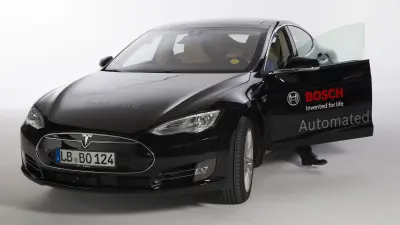
We’re first focusing on Europe, Japan, and the United States, and a little later we’ll add China. For each country, we have to make sure our systems consider the local driving style and the relevant rules — in the U.S., for example, vehicles also pass on the right. It’s the same story for infrastructure. In Germany, we have the problem that traffic lights are positioned on the roadside in front of the actual intersection, not suspended over the middle of the intersection. For this reason, we need a camera that can look upward at a steep angle.
Can you describe your personal vision of what will it be like to drive a car in 2030?
In the morning, my car will tell me when I need to leave to make sure I get to the office on time. I’ll use my smartphone to summon the car from my garage to my front door. On the way to work, I’ll be answering e-mails or watching the news on the screen installed in my car. I could also turn around completely and chat with the other passengers in a lounge-style setting. Or, I could move my seat right back, pull a folding table out from the center console, and do office work. But this is all still crystal ball-gazing; there’s no way of knowing how things will ultimately turn out.
With cars driving themselves, how much of driving enjoyment will be left?
The way we experience and value cars will certainly change. After all, we’ll find plenty of ways to use the time that our cars free up for us, either for productive work or for relaxation. But that won’t limit the potential for driving enjoyment. We’ll still be able to feel the thrill of freedom on high mountain roads just by switching to classic driving mode and doing the steering ourselves. Automated driving simply adds to the list of things that cars can do. It could well be that we will use vehicles for far more things in the future.
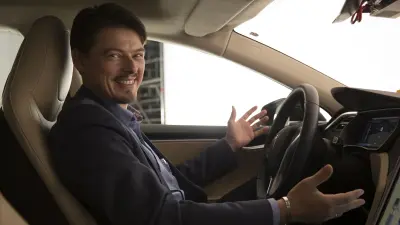
Summary
Project manager Michael Fausten says that self-driving cars make mobility safer, greener and less time consuming. Bosch works on a concept for automated driving that is independent of the type of powertrain installed.
